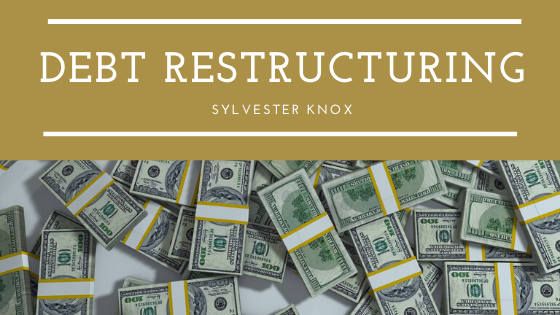Companies often carry out debt restructuring to avoid defaulting on loans or taking advantage of lower interest rates. The process may extend the date when a company’s liabilities are due or may help an individual avoid insolvency. These five basics topics cover the entire process, including different types.
What is Debt Restructuring?
There are many different forms of debt restructuring. The broadest definition is settling debt obligations through a debt management program. Settling debts this way may result in a reduction of interest rates or the debt amount. Chapter 13 bankruptcy is one type of debt restructuring plan that individuals know by name.
Companies and individuals can restructure debt when facing insolvency. According to a debt management plan, senior debt holders are paid before lenders of subordinated debts. Creditors may be willing to alter these terms to avoid a bankruptcy or default.
How the Process Works
Restructuring debt is carried out through reducing interest rates, extending loan dates, or both. The move can improve a company or individual’s chances of paying back their debts on time. Restructuring is often seen as a win-win situation for both debtor and creditor. A bankruptcy is avoided, and lenders receive more than they would had a bankruptcy occurred.
Different Types of Debt Restructuring
There are two different types of debt restructuring an individual can complete to eliminate their debt.
Debt Management Plan
A debt management plan drawn up by a non-profit credit counseling agency is one option. This agency will take on the debt and negotiate a reduced interest rate with creditors. The move will also consolidate all payments into one.
Bankruptcy
Debt can also be restructured through a Chapter 13 bankruptcy. The process requires going before a judge who will examine the debt. The debt may be wiped out completely or restructured into a payment plan to be paid off within five years. Bankruptcy proceedings usually take much longer than debt management plans and require an attorney.
Pros & Cons of Debt Restructuring
There are some advantages and disadvantages to the debt restructuring process.
Pros
- Collection calls stop
- Credit score damage can be repaired
- Debts can be paid off in five years
Cons
- Long-term bad marks on credit reports for up to 10 years
- Loss of access to credit cards
- Bankruptcy is high-cost with attorney and court fees
Debt Restructuring vs. Debt Consolidation
Debt consolidation should be considered before debt restructuring. Debt consolidation means taking out a personal loan for current debt. The new loan should feature a lower interest rate, making it easier to pay off. Debt consolidation is a better strategy for those who still have good credit.
If you think debt restructuring could help you, please seek the help of a financial planner.

